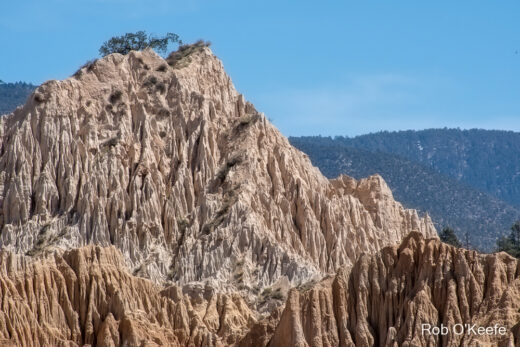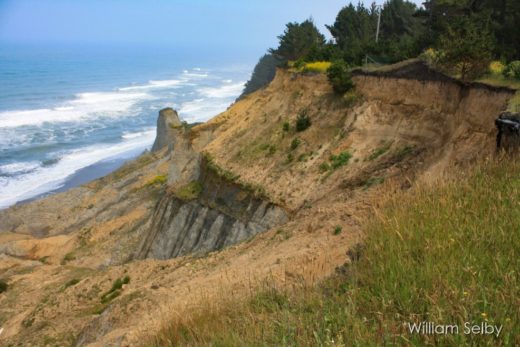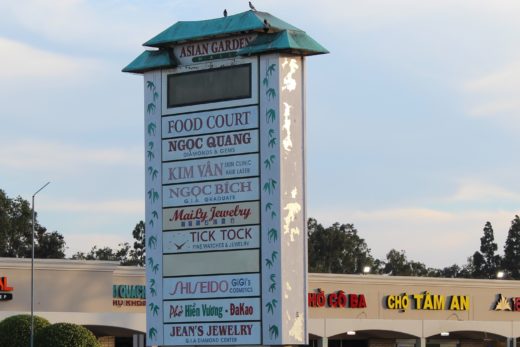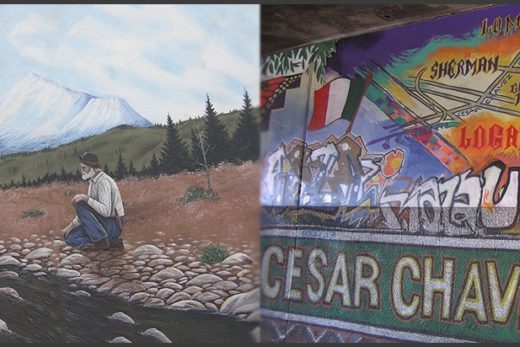We have often noted how California’s physical and human geography extends far beyond our state’s borders. This is particularly true when we examine our natural landscapes and the processes that have formed them; they adhere to and follow no political boundaries. Our state’s transparent boundaries may also be evident in our human landscapes and among the people who shape them. Current events in Tijuana serve as one of the most obvious examples in this latest rendition of borderlands geography gone wild.

Some Tijuana History
By the mid-1900s, Tijuana was gaining a stereotyped reputation as a tourist town where you could find horseracing, bullfighting, cheap souvenirs, and plenty of Ugly Americans searching for their next shots of Tequila. It also evolved as the city between, as Californians traveled through it to their vacation homes and resorts in such places as nearby Rosarito Beach and Ensenada. For the more adventurous, it was the staging grounds for explorers traveling farther down the Baja peninsula. It was also the last stop before migrants from Latin America took their last step – legally or illegally – north into a promising California of their dreams. One thing is certain: it has never been your average Mexican city.
This border town of immigrants quickly grew from about 60,000 in 1950 to more than 1.5 million by 2018 and up to 2 million including the greater sprawling metropolitan area. When trade barriers eased in the late 1900s, maquiladoras erupted on the Mexican side of the border. These manufacturing industries (that some would label sweat shops) exploited the cheap labor pools that then flooded north by the hundreds of thousands, often in the form of young Mexican women fleeing the poverty that would motivate them to work hard for long hours. Mexico’s and Tijuana’s relaxed labor and environmental regulations attracted mammoth corporations from around the world that could make inexpensive products and easily ship them to the consuming masses across the porous border. To the east, Tecate and Mexicali also grew into manufacturing behemoths.
Maquiladoras Attract Immigrants
Tijuana quickly became one of the world’s great manufacturing centers, especially in electronics. It has been the world’s leading manufacturer of TVs since the 1980s. Add computer components and accessories and other electronics and by 2016, more than half of Tijuana’s formal jobs were in manufacturing.
Just before and since the turn of the century, billions of dollars have been pumped into Tijuana’s economy in single years. Tens of thousands of new jobs were added as payrolls grew by more than 10 percent each year. Signs across the city announced “Se Necesita Personal”, especially in the Mesa de Otay industrial zone. Even U.S. exports to Mexico soared to record billions of dollars per year in the ongoing trade boom.
The impacts on Tijuana cultures and landscapes have been profound as its populations grew at more than 5%/yr. These represented the greatest migrations in Mexico since the 1960s. Hundreds of thousands of new arrivals crowded Tijuana’s streets, straining an already overwhelmed infrastructure, spreading wealth, diverse cultures, poverty, pollution, and crime well beyond city and national borders. Squatters’ barrios had no services or infrastructure, such as power, water, and sewage disposal.
Many transient immigrant workers took their hard-earned money and returned to their homelands in Mexico, while others continued their migrations into the United States. All of this activity continues to have obvious impacts on California: San Ysidro and Otay Mesa just to the east are recognized as the busiest border crossings in the world. These powerful connections that include labor pools, commercial trade, and tourism helped boost crossings from Tijuana to San Diego to more than 60 million people each year.
Housing and Services for New Immigrants
Solutions to infrastructure and environmental problems bear costs estimated at billions of dollars/decade as Tijuana attempts to catch up with these historic economic and migration trends and stabilize its border populations. But each year, new developments challenge those efforts.
When thousands of Haitians from Brazil arrived in 2016 and 2017, an estimated 6,000 of them were placed in shelters scattered around TJ. And the more “permanent” settlement of about 3,500 Haitians has been used as a model to handle the latest humanitarian crisis. This comes in the form of the now world-famous caravan of thousands of refugees from Central America escaping extreme violence and poverty, hoping to be admitted into the U.S. While passing north through southern Mexico, the caravan was supported with food, medical care, and temporary shelter. They were followed by media from around the world. Some of them split off and diffused into other parts of Mexico. But their stories are very different form the Haitians that settled just before them.
Caravan at the Border
That humanitarian support soured as thousands approached the U.S. Border. Using terms such as invaders and criminals, President Trump sent thousands of troops to stop them. Large numbers of troops called to the Texas border with Mexico were left with nothing to do when the caravan funneled along the same paths and toward the same city as the hundreds of thousands before them: Tijuana. Some (including the Mayor of Tijuana) note how these latest Central American refugees arrive with different stories and baggage than other groups, such as the Haitians who settled just before them.
Already with limited resources, Tijuana institutions and infrastructures are being strained beyond their limits. Some locals even organized public demonstrations displaying open hostility toward the refugees. American and Mexican lawyers (the borderlands legal industry is visible throughout Tijuana) huddled with the refugees to announce the dreaded truth: only about 20% of Central American applicants are granted asylum status in the U.S. and that process can take many months. Thousands of applicants are being added to the list while only about 100 are being processed at this border crossing each day.
Nevertheless, with the support of social media and volunteer organizations, more than 5,000 members of the caravan converged on Tijuana before December 2018. Tensions mounted in this crowded city. Tijuana makeshift shelters became overcrowded with asylum seekers who would never make it legally into the U.S. Talk turned to the legal implications for the impatient who might try to cross into California illegally. Others considered applying for more accessible Mexican humanitarian visas that might allow immigrants to seek asylum and even work in Mexico. Hope soon turned to despair for thousands of refugees who had travelled over 2,500 miles north.
Public Perceptions Evolve as U.S. Officials React
U.S. Customs and Border Protection officers were seen guarding the border in full anti-riot gear. On November 25, agitators managed to incite one immigrant group to storm the border. The consequences were predictable: violent images of desperate refugees running full speed as they were met with tear gas and sounds of weapons fire. The struggle was splattered in spectacular fashion throughout popular media. After brief closures into San Diego, President Trump vowed to permanently close the entire border if threats of illegal crossings continued.
Scholars have exposed many of the hidden tragedies in the latest circus of mistakes that characterize our dysfunctional immigration policies over the years. Harvard University professor Ieva Jusionyte has noted how the styles, heights, and locations of border walls have delivered physical punishment to immigrants who dare cross without permission. Those who illegally cross where there is no wall will face wilderness, where bandits or winter’s bitter cold and summer’s searing heat have tortured or killed thousands. Some of the more athletic may try to scale the walls, only to lose fingers at the top or to seriously injure or break feet, ankles, legs, and spines while falling down to the U.S. side. Volunteers and border enforcement officers keep emergency responders busy with the 24/7 calls after helpless victims are found. The sick and injured often require long periods of medical care for rehabilitation. Still, they keep coming.
You will find a much more detailed analysis of immigration’s impacts on California in Chapters 7, 8, and 9 within the 4th edition of our publication. Our perceptions of immigrants and our policies toward immigration too often fall into emotionally-charged, politically-motivated good immigrant/bad immigrant debates. Demagogues on one extreme attempt to demonize them while the other far side lifts them up on pedestals of angelic innocence. But a little research and experience proves that today’s immigrants are very similar to those who came before to populate our state and more similar to all of us than we might want to imagine, sharing kindred dreams and fears, strengths and weaknesses, good and bad.
Confronting the Sources of Desperation
Debates continue on both sides of the border about how to craft and implement effective, comprehensive immigration policies, while volunteers hope that such terms as dignified and humane will determine how we treat the latest refugees. Many don’t realize that as the number of border crossings decreased during the last decade, the number of asylum seekers have substantially increased. So if any new policies are to work, they must address the uncomfortable truth that Americans too often ignore: thousands of these refugees are fleeing violent drug cartels in Central America and Mexico that are doing business with the United States.
Those cartels are buying most of their weapons from the U.S., which is why you will find hundreds of firearms dealers locating their businesses near the border. The majority of crime firearms in Central America and Mexico are being traced directly back to those U.S. dealers in a “vast guns bazaar”: we’re talking about hundreds of thousands of firearms worth hundreds of millions of dollars each year.
And we know the cartels are getting most of their cash to buy our weapons by selling illicit drugs to a second-to-none U.S. consumer market that is terribly addicted. Since this ongoing and now historic deadly cycle is no secret to anyone who wants to do some quick research, we might ask why it is not getting more media and policy-making attention. It is certain we will not solve these immigration problems and the appalling human suffering on both sides of the border unless we confront and help eliminate the source of these desperate immigrants’ problems. Like so many other California problems and their solutions, our road ahead will require a lot of looking in the mirror.
Still Crossing the Border
Those of us who have travelled from California to Mexico over the years recognize how border crossings and the Tijuana and Baja experiences have changed. The walk or drive south into Mexico remains relatively smooth and easy, no questions asked. But crossing back north and into California has become a time-consuming hassle, even for U.S. Citizens. More drastic changes appeared after the 9/11/2001 terrorist attacks. Eventually, passports were required – even for U.S. citizens – to cross back into the U.S. Thousands of legal U.S. residents who were not citizens have been shocked in recent years after learning that they deported themselves simply by walking into Tijuana for a few hours. Waiting periods for vehicles and pedestrians headed back north toward San Diego have ranged from a half hour (usually after midnight on weekdays) to up to three hours (such as on Sunday afternoons and evenings).
The carnival atmosphere that once entertained lines of waiting commuters and other travelers now often turns to dread when leaving a bustling, crowded TJ, signs that border politics and policies have changed. (By 2021, repeated reversals in U.S. border policies had created a type of whiplash reactionary atmosphere of confusion, especially for those considering crossing over. This was fueled by a change in administrations in the middle of a COVID-19 pandemic that had already complicated immigration policies. And ongoing political conflicts between U.S. lawmakers continued to block the sensible comprehensive immigration reform required to introduce more stability and order to the border.) Still, powerful connections and potentials remain between these remarkable, evolving conurbations we call San Diego and Tijuana, borderlands that are home to about 5 million people.
Walking Around Tijuana
Our images here (from a few years ago) serve to introduce you to a few notable landscapes as we walk across California’s borderlands and into urban Tijuana. We suggest you visit on your own so that you can enjoy the street tacos and rich cultures. Bring the family and friends, make sure your legal status allows your return, follow all the rules, and don’t forget your passports.




